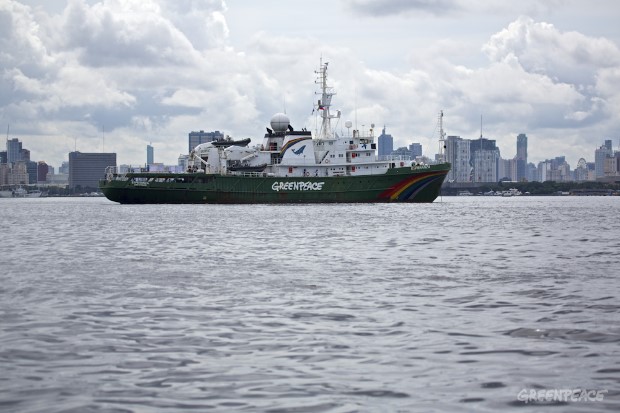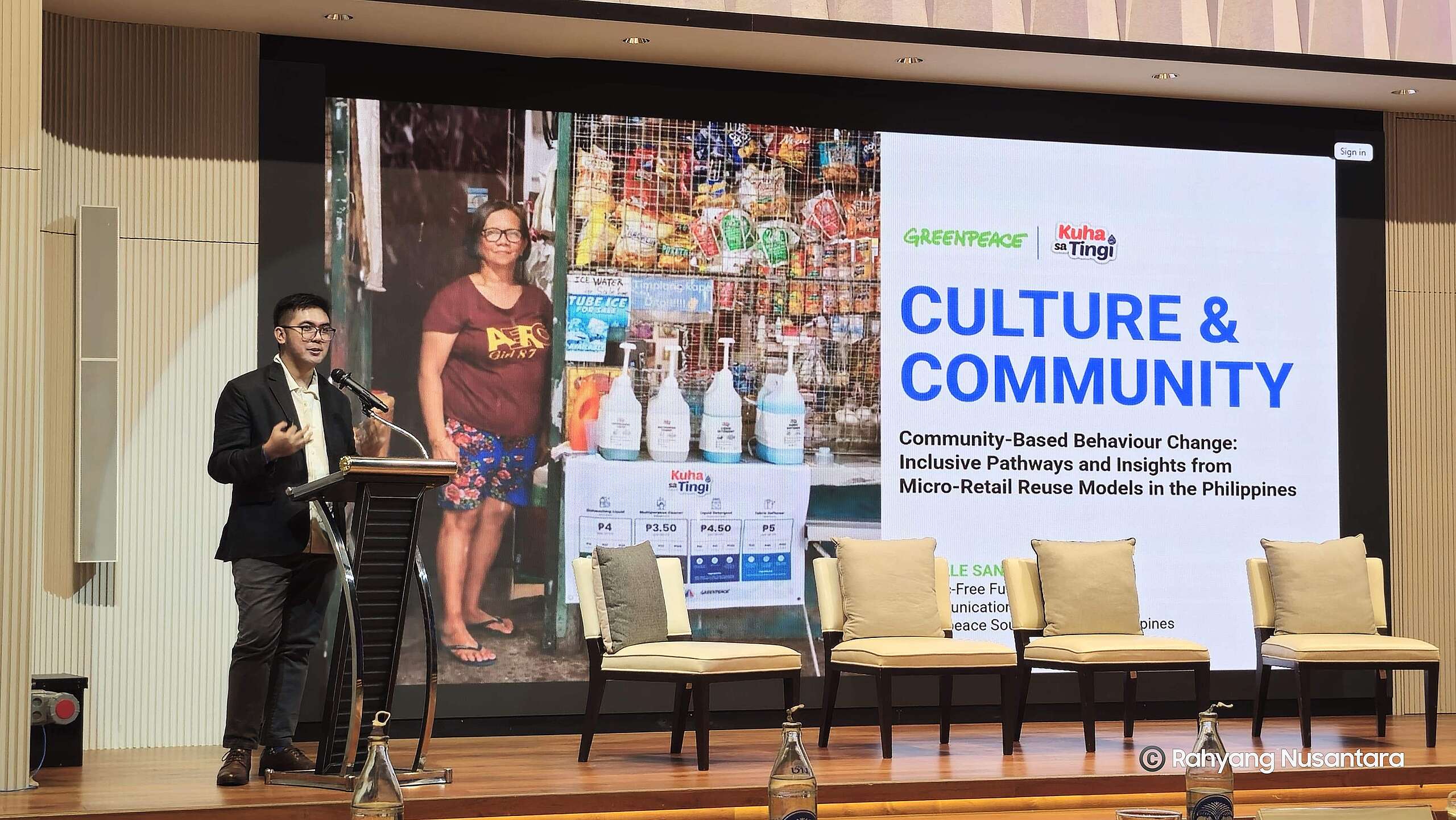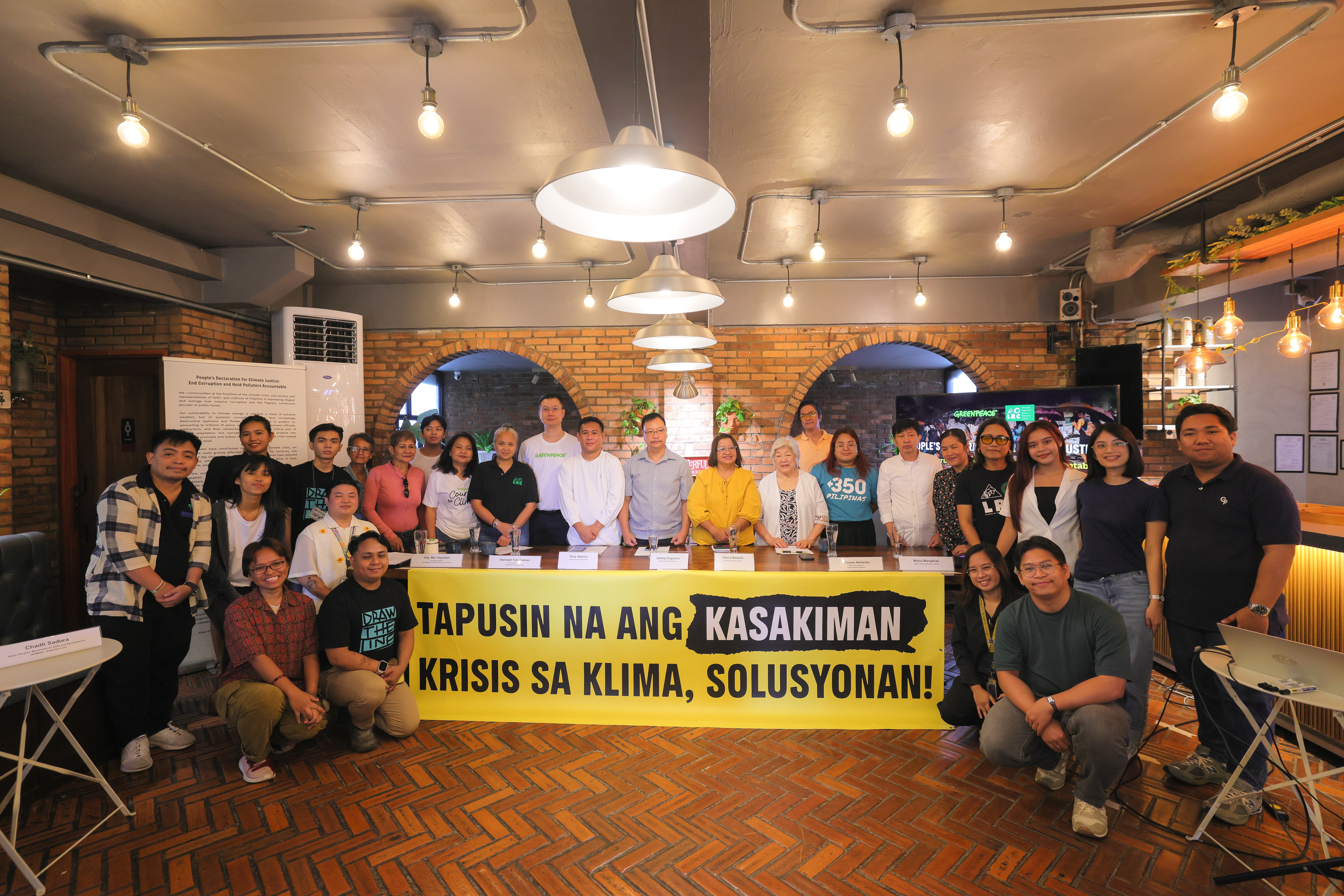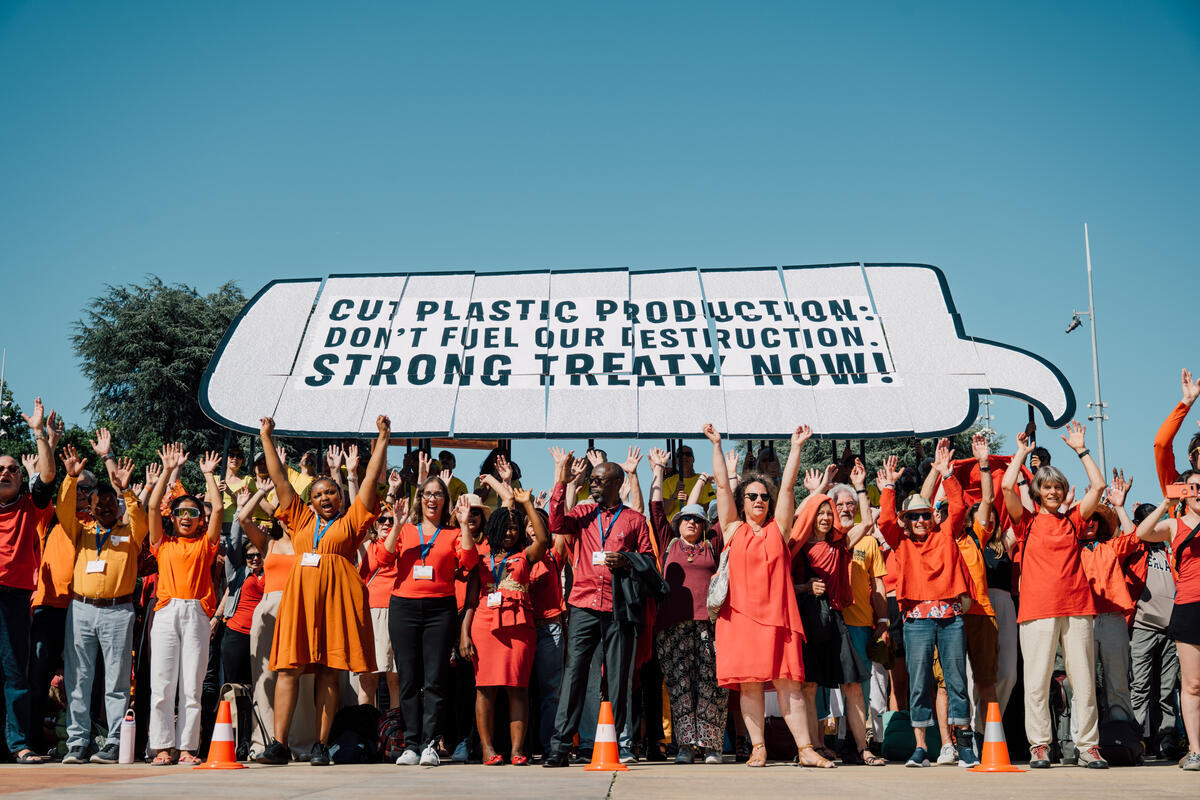The waters of Manila Bay are the most polluted in the country, serving as a giant waste-dump for the metropolis. Here, domestic sewage, toxic industrial effluents from factories and shipping operations, leachatefrom garbage dumps, and runoff from chemical agriculture, converge into a hideous cocktail. Although a subject of a Writ of Continuing Mandamus issued by the Supreme Court in 2008, ordering various government agencies to help in its clean up, the bay’s condition remains largely unimproved. Greenpeace and scientists from UP-MSI are calling on the Philippine government to enact immediate measures to reverse the bay’s shocking decline.
“When you think of Manila Bay, contrasting images come to mind. First of a coastline littered with trash, and second, of a beautiful sunset,” said Dr Laura David of UP-MSI. “But what is really interesting is that underneath these familiar images, Manila Bay, with all its pollution, still contains life and gives life.”
“With strong political will, the comprehensive rehabilitation of Manila Bay is not impossible. Government agencies and local government units should not lose sight of fulfilling this goal,” said Vince Cinches, Greenpeace Southeast Asia Oceans Campaigner.
Research shows that unprocessed waste ending up in the bay has resulted in high levels of fecal coliform and the presence of heavy metals, pesticides, and excess feeds in its waters. This, along with other factors, have resulted in the degradation of Manila Bay and its coastal areas, resulting in an estimated PHP 4 billion in damages yearly, mostly in fisheries, exports, and mortality costs due to waterborne diseases.
“Pollutants which come from both land and sea are responsible for grave effects on marine life because they interfere with the functions of marine ecosystem,” said ENS Grace Idos, Chief of Staff of the Marine Environmental Research and Development Center (MERDC) of theMarine Environmental Protection Command (MEPCOM) of the Philippine Coast Guard, present during a press conference after the scientific demonstration. “Among the many contributors to the pollution in Manila Bay are oil spills coming from ships, vessels, and industries along waterways and land vehicles that throw their used oil in creeks, canals, and drainage every time they change engine oil.”
Partial economic valuation of selected uses of Manila Bay’s resources in 2006 estimated more than PHP 8.7 billion a year earned from aquaculture (PHP 5.1 billion), tourism (PHP 2 billion), and in ports/harbors and offshore fisheries. Among the major economic activities in Manila Bay are mussel (tahong) and oyster (talaba) farming. Overfishing is prevalent in the bay which is also a source of commercially important species such as hasa-hasa, bisugo, bagaong, pusit, alimasag, and hipon suahe.
However, because of pollution, marine species in the bay may contain heavy metals and other persistent toxic substances. Dr. Romeo Quijano, Professor in the Department of Pharmacology and Toxicology, UP College of Medicine, says that once ingested, these pollutants may cause cancer, immune system disease, endocrine disruption, reproductive toxicity, congenital malformation and developmental disorders, and many other diseases.
“Allowing the seas to recover benefits not only the environment but also ourselves,” said Cinches. “Manila Bay, representative of the challenges besetting Philippine seas, is dying. Restoring Manila Bay, as well as Philippine seas in general, is not just aesthetic. It brings life and livelihood to coastal communities. Greenpeace is calling on the Philippine government to enact a Roadmap to Recovery for the Philippine Seas that would allow our seas to continue to be a productive resource for future generations of Filipinos.”
The Esperanza is in the Philippines for the “Ocean Defender Tour of Southeast Asia 2013.” The tour aims to tell the story of the richness and the beauty of the Philippine seas, expose destruction that causes marine degradation, and sound the alarm to call for urgent government action to save the Philippine seas from crisis. Filipinos can join the growing movement of people dedicated to saving the seas by signing up at www.defendouroceans.org.
For more information:
Vince Cinches, Oceans Campaigner, [email protected], 09175363743
Virginia Benosa-Llorin, Media Campaigner , [email protected], 09178228793
Aya Carino, Researcher from UP-MSI, [email protected], 09994406680




















